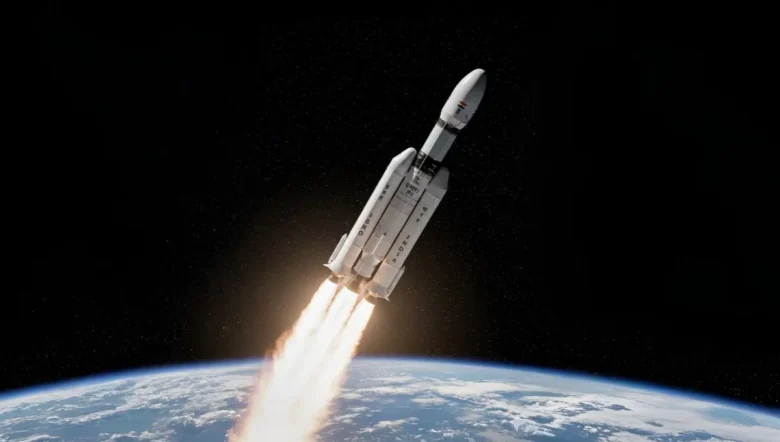| Summary |
|
The Indian Space Research Organization (ISRO) is preparing for a major launch that will boost the nation’s defense communication network. On November 2, 2025, ISRO will send the 4,400-kilogram CMS-03 satellite into orbit aboard the LVM3-M5 rocket from Sriharikota.
The satellite, the heaviest communication satellite India has ever built, will strengthen secure links across the Indian Ocean and improve coordination for the Indian Navy.
CMS-03, also known as GSAT-7R, will first enter a geosynchronous transfer orbit before being moved into a geostationary orbit about 36,000 kilometers above Earth. This orbit allows the satellite to remain over the same region, ensuring uninterrupted communication.
ISRO designed CMS-03 to operate across multiple frequency bands, supporting secure voice, data, and video communications. The satellite acts as a central relay hub, connecting naval assets over large distances, including ships, submarines, and aircraft.
The new satellite replaces GSAT-7, which was launched in 2013. While that earlier system handled basic communication, CMS-03 offers expanded bandwidth, faster data rates, and better security. It allows real-time data exchange across the Navy’s fleet, improving situational awareness and coordination.
CMS-03 will also enhance India’s ability to monitor maritime activity in the Indo-Pacific, a region of growing strategic importance. By providing uninterrupted connectivity, the satellite supports both surveillance and tactical operations. It is also expected to help India strengthen communication links with friendly nations during joint naval exercises.
Standing 43 meters tall, the LVM3 rocket is ISRO’s most powerful launcher. It uses two solid-fuel boosters for liftoff and a cryogenic upper stage powered by liquid hydrogen and oxygen for precise orbital placement. The mission aims to release the satellite into orbit about 16 minutes after launch.
The LVM3 has completed seven consecutive successful flights, including the Chandrayaan-3 lunar mission in 2023. Engineers rolled the M5 vehicle to the launchpad last week, and final checks are underway. Weather conditions remain favorable, though late-season monsoon clouds could still affect visibility.
A successful launch will further confirm the LVM3’s reliability and readiness for heavier payloads. ISRO plans to use upgraded versions of this rocket for upcoming Gaganyaan crewed missions. The agency also hopes to attract more international clients by showcasing the vehicle’s consistent performance.
Beyond defense, satellites like CMS-03 play a broader role in national communication infrastructure. They help link remote regions, improve disaster response, and expand digital access. With this addition, India’s active satellite fleet now exceeds 50, supporting both civilian and military needs.
The launch is scheduled for Sunday morning from the Satish Dhawan Space Centre. If all goes as planned, the fiery liftoff will mark another milestone in India’s growing space capabilities and its effort to secure the skies above its seas.

